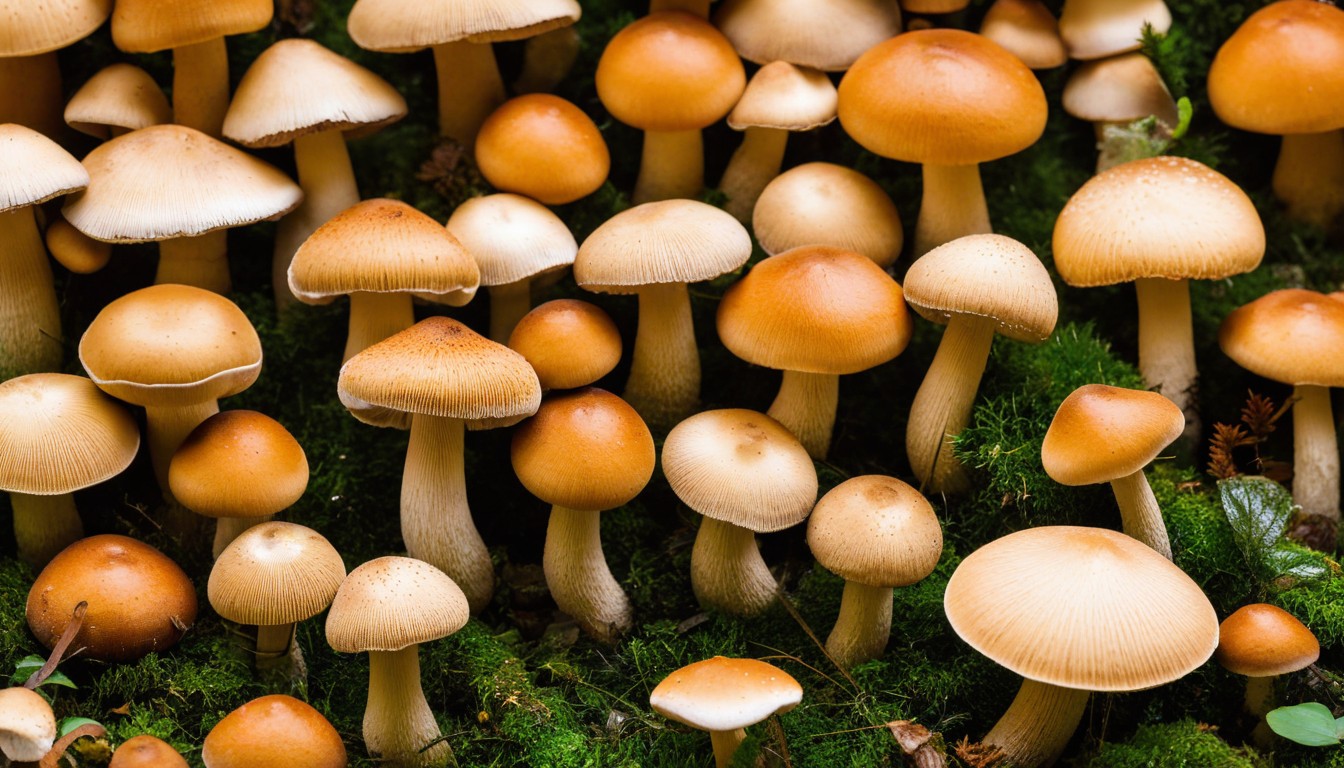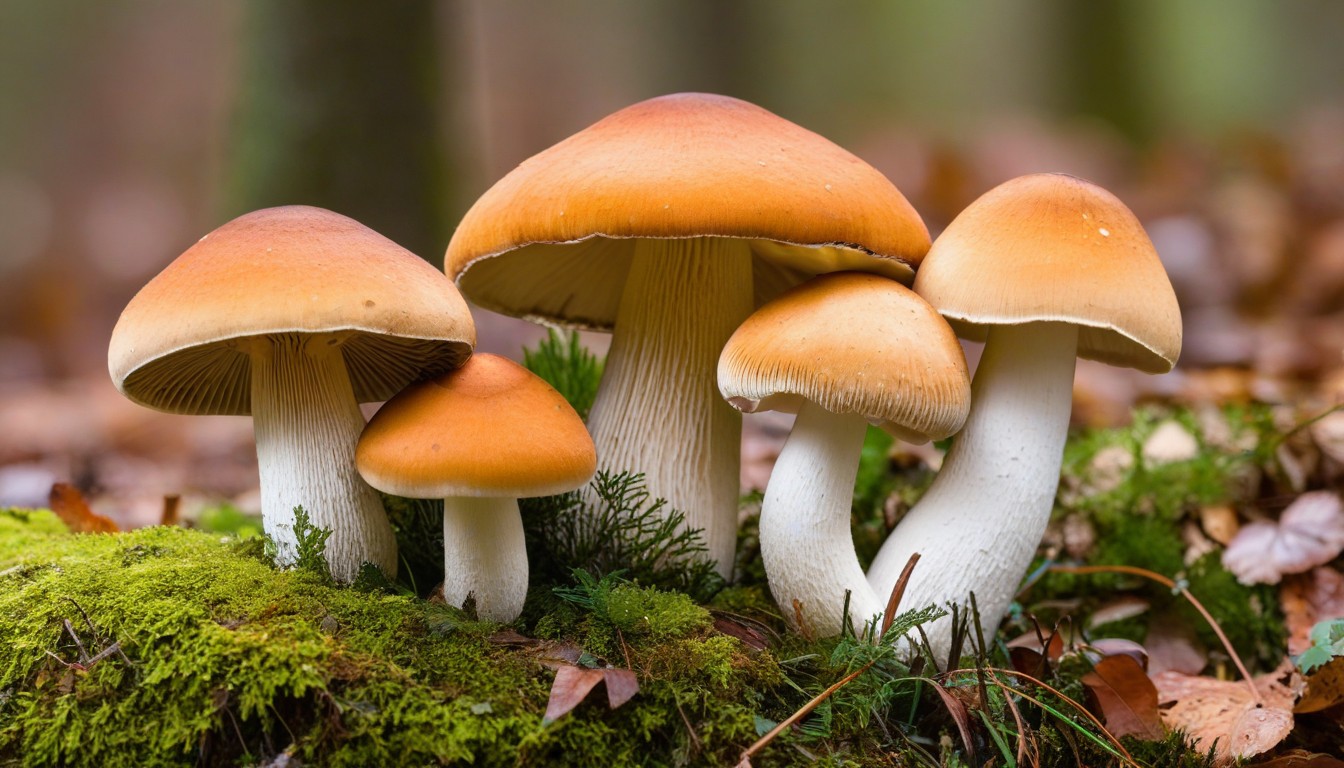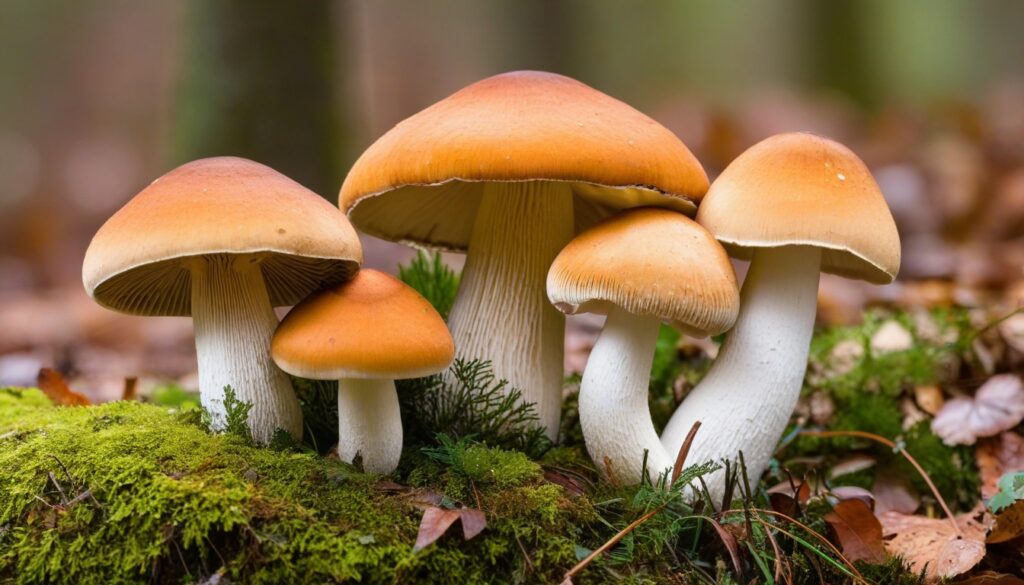Missouri boasts a diverse array of edible mushrooms that are waiting to be discovered. From the meaty and flavorful Hen of the Woods to the coveted Morels, foraging for these delicious fungi has become a popular pastime for many Missourians. If you’re curious about this world of edible mushrooms, you’ve come to the right place. In this guide, we’ll walk you through everything you need to know about foraging for edible mushrooms in Missouri. From identifying and safely harvesting them to preparing and cooking these nature’s delicacies, you’ll be an expert in no time.
Key Takeaways
- Missouri is home to a variety of edible mushrooms, including Morels and Hen of the Woods.
- Foraging for edible mushrooms can be a fun and rewarding pastime.
- Safety should always be a top priority when foraging for mushrooms.
- It’s important to understand the characteristics of edible mushrooms and to avoid poisonous varieties.
- Once harvested, edible mushrooms can be prepared and cooked in various ways and preserved for future enjoyment.
The Fascinating World of Edible Mushrooms
Edible mushrooms are not only delicious and nutritious, but they also play a vital role in ecosystems. They assist in decomposing organic matter, releasing nutrients back into the soil, and creating habitats for other fungi and wildlife. There are over 10,000 known species of mushrooms, and each one is unique in its shape, size, texture, and flavor.
It’s essential to differentiate between edible and poisonous mushrooms, as some species can be lethal when consumed. The best way to ensure safety is to research and consult with an expert before consuming any wild mushrooms.
“All mushrooms are edible, but some only once.” – Croatian Proverb
Benefits of Foraging Edible Mushrooms
Foraging for edible mushrooms in Missouri can provide numerous benefits beyond the thrill of the hunt and the satisfaction of finding these natural delicacies. Here are some of the benefits you can experience:
Improved Nutrition
Edible mushrooms are a great source of essential vitamins and minerals, such as vitamin D, potassium, and B vitamins. Adding these nutritional powerhouses to your meals can boost your immune system and improve your overall health.
Cost Savings
Foraging for edible mushrooms can be a cost-effective way to enjoy fresh produce, especially if you compare the price of store-bought mushrooms. Plus, it can be a fun, free outdoor activity for families and friends to enjoy together.
Sustainable Practice
Foraging for edible mushrooms can be a sustainable practice that promotes conservation. When harvested responsibly, the ecosystem can benefit from increased biodiversity and reduced waste in nature. It’s important to follow ethical practices, obtain foraging permits where required, and only collect mushrooms that are abundant and won’t harm the environment.
Connect with Nature
Foraging for edible mushrooms is a wonderful way to connect with nature and experience the outdoors in a meaningful way. Whether you’re exploring new areas, learning about different habitats, or simply enjoying the beauty of nature, foraging can be a rewarding and rejuvenating experience.
Overall, foraging for edible mushrooms in Missouri offers a range of benefits, including improved nutrition, cost savings, sustainable practices, and a deeper connection with the natural world. So grab your basket and head out into Missouri’s abundant forests and prairies to discover the many edible mushrooms waiting to be found!
Safety First: Identifying Edible Mushrooms

Foraging for edible mushrooms can be a fun and rewarding experience, but safety should always be your top priority. When identifying edible mushrooms, it’s essential to understand the key characteristics and features that distinguish them from poisonous varieties. Here are some tips to help you safely identify edible mushrooms:
- Spore print: Make a spore print by placing a mature mushroom cap onto a piece of paper, gill-side down, and leaving it overnight. Different mushroom species have unique spore prints, ranging from white to black, brown to pink, or even yellow to green.
- Gills, pores, or ridges: Observe the cap underside to determine if the mushroom has gills, pores, or ridges. Different edible mushrooms have distinct features, such as crowded gills, small pores, or forked ridges.
- Stem: Pay attention to the mushroom stem’s shape, color, and texture. Edible mushrooms range from thick and stubby to long and slender, with smooth or fuzzy surfaces.
- Cap: Examine the cap’s shape, color, and texture. Some edible mushrooms have flat caps, while others are round or cone-shaped. They can be smooth, scaly, or bumpy, and their color can range from white to brown, red to orange, or even blue to violet.
- Bruising: Press your finger or knife blade against the mushroom flesh to observe if it bruises or discolors. Some edible mushrooms will show a slight color change, while others may turn black or blue.
- Smell: Finally, take a sniff to detect the mushroom’s aroma. Edible mushrooms can have a mild, nutty, fruity, or earthy fragrance, while poisonous mushrooms can have a strong chemical or ammonia odor.
It’s crucial to note that some edible mushrooms can resemble poisonous ones. Therefore, it’s essential to cross-check your identification with a reliable field guidebook or an experienced forager. Avoid relying solely on websites or social media posts that contain inaccurate or misleading information. By learning how to safely identify edible mushrooms, you can enjoy the delicious flavors of nature while minimizing the risks.
Popular Edible Mushrooms in Missouri
Missouri is a treasure trove of delectable edible mushrooms, including some of the most flavorful and sought-after varieties in the world. Here are some of the popular edible mushrooms found in Missouri:
|
Mushroom Name |
Habitat |
Harvest Time |
Unique Characteristics |
|---|---|---|---|
|
Morchella esculenta (Morel) |
Wooded Areas |
April-May |
Honeycomb-like cap texture and nutty flavor |
|
Grifola frondosa (Hen of the Woods) |
Deciduous Trees |
September-November |
Large, overlapping caps and earthy taste |
|
Pleurotus ostreatus (Oyster Mushroom) |
Logs and Trees |
Year-round |
Soft, delicate texture and seafood-like flavor |
|
Cantharellus cibarius (Chanterelle) |
Wooded Areas |
June-October |
Bright yellow, trumpet-shaped cap and fruity aroma |
These popular edible mushrooms in Missouri have their distinct unique characteristics and are found in different habitats during varying times of the year, so it’s important to carefully identify and harvest them while following proper foraging guidelines. Once harvested, these mushrooms can be used in various dishes such as soups, sauces, and stir-frys, providing a gourmet addition to any meal.
More Edible Mushroom Varieties in Missouri

Missouri is a treasure trove of delicious and unique edible mushrooms beyond the popular species. Expand your foraging horizons with these additional varieties:
|
Mushroom Variety |
Distinctive Qualities |
Best Time for Harvest |
|---|---|---|
|
Black Trumpet |
Woodsy aroma, meaty texture, and subtle smokiness. |
May to November |
|
Cauliflower Mushroom |
Robust, nutty flavor with a firm texture that can add bulk to dishes. |
September to December |
|
Chicken of the Woods |
Distinctive chicken-like flavor, texture, and aroma with bright yellow color. |
May to December |
|
Lion’s Mane |
Sweet, shellfish-like flavor and delicate texture, with a striking appearance that resembles a lion’s mane. |
June to December |
|
Porcini |
Hearty and earthy flavor with a meaty texture that adds depth to dishes. |
May to October |
If you’re lucky enough to stumble upon these savory delights, be sure to follow proper identification and harvesting guidelines. These lesser-known mushrooms offer a new world of flavors to explore and enjoy!
Where and When to Find Edible Mushrooms in Missouri
Missouri offers a diverse range of locations where you can find edible mushrooms. The best places to start your foraging adventure are wooded areas and forests, particularly those with oak and hickory trees. Look for fallen leaves and decaying wood, as these provide the optimal conditions for mushroom growth. Other areas to explore include prairies and riverbanks.
When it comes to the seasons, spring and fall are the best times to search for mushrooms in Missouri. Spring is an ideal time for morel mushrooms, which usually emerge in late March or early April and can be found until May. Fall is the season for a variety of mushrooms, including oysters, chanterelles, and shiitakes.
Top Locations for Mushroom Foraging in Missouri
|
Location |
Best Time to Forage |
Common Mushroom Species |
|---|---|---|
|
Mark Twain National Forest |
Spring and Fall |
Morels, chanterelles, oysters |
|
Knob Noster State Park |
Spring and Fall |
Morels, chanterelles, shiitakes |
|
Hawn State Park |
Spring and Fall |
Morels, chanterelles, oysters, hedgehogs |
|
Cuivre River State Park |
Spring and Fall |
Morels, chanterelles, oysters |
Exploring Missouri’s natural environments can lead you to discover an array of edible mushrooms. Always ensure you have the necessary permits to forage in designated areas and obtain permission from private landowners before searching for mushrooms on their property. Happy hunting!
Harvesting Edible Mushrooms Responsibly

When foraging for edible mushrooms, it’s important to adhere to responsible harvesting practices to preserve and sustain mushroom populations for future generations. Here are some ethical guidelines and considerations:
- Leave No Trace: Avoid damaging the environment by leaving the area as you found it. This includes not disturbing the soil or vegetation and avoiding trampling on other mushroom patches.
- Harvest Only What You Need: Taking only what you need ensures that there are enough mushrooms left for others as well as for future growth.
- Avoid Over-Harvesting: When one mushroom patch is discovered, it can be tempting to take every mushroom you see, but this can damage the patch and disrupt natural growth patterns. Instead, leave some mature mushrooms to help the patch reproduce for future foragers.
- Practice Identification: Before harvesting any mushrooms, ensure that you’ve correctly identified them as safe for consumption. Learn to differentiate between edible and poisonous varieties, and avoid harvesting any mushrooms that you’re unsure of.
- Promote Mushroom Growth: Encourage future growth by cutting mushrooms at the base instead of pulling them out of the ground. This leaves the base intact and allows future growth from the same patch.
By following these guidelines, you can not only enjoy the delicacies of nature but also help preserve the ecosystem while promoting sustainable growth.
Preparing and Cooking Edible Mushrooms
Once you’ve successfully foraged for some edible mushrooms, it’s time to start cooking! Here are some essential tips and tricks for preparing and cooking your foraged treasures:
Cleaning and Prepping
Before cooking, it’s important to clean your mushrooms properly. Use a soft-bristled brush or a damp cloth to brush off any dirt or debris. Avoid washing your mushrooms, as they can absorb too much moisture and become slimy. Trim off any tough stems or woody parts before cooking.
Cooking Techniques
There are many ways to cook edible mushrooms, and each technique brings out unique flavors and textures. Here are some popular cooking methods:
- Sautéing: Heat some butter or oil in a pan over medium-high heat, add sliced mushrooms, and cook until they release their moisture and become tender. Add your choice of aromatics, such as garlic or shallots, for additional flavor.
- Roasting: Toss whole or sliced mushrooms in olive oil, salt, and pepper, and roast in a preheated oven at 400°F for about 15-20 minutes, until golden brown and crispy.
- Grilling: Brush large, meaty mushrooms like portobellos or shiitakes with some olive oil and grill them over medium-high heat for a few minutes on each side. Serve as a tasty vegetarian entree or burger alternative.
- Stir-Frying: Cut your mushrooms into bite-sized pieces and stir-fry them in a hot pan with some oil, along with other vegetables and protein. Add soy sauce, oyster sauce, or other Asian seasonings for extra flavor.
Recipe Inspiration
The possibilities for cooking with mushrooms are endless. Here are some recipe ideas to try:
- Mushroom risotto
- Creamy mushroom soup
- Mushroom and goat cheese tart
- Portobello mushroom burgers
- Stuffed mushrooms
Tips for Enhancing Flavor
To enhance the natural flavors of your foraged mushrooms, try these tips:
- Use flavorful oils like truffle oil or sesame oil
- Add fresh herbs like thyme, parsley, or rosemary
- Sprinkle some grated Parmesan cheese or nutritional yeast on top
- Add a splash of white wine or lemon juice for acidity
- Experiment with different spice blends for added complexity
With these tips and techniques, you’re ready to start cooking up a storm with your foraged mushrooms. Enjoy!
Preserving Edible Mushrooms for Future Enjoyment

Once you’ve foraged for edible mushrooms, it’s essential to preserve them properly so that they remain fresh over time. Different methods of preservation might work better for different types of mushrooms, so it’s important to know the options.
|
Preservation Method |
How to Do It |
|---|---|
|
Drying |
Slice up your mushrooms and then dry them in a dehydrator or in the oven on low heat. Once dried, store them in an airtight container in a cool, dry place. |
|
Freezing |
Blanch your mushrooms briefly in boiling water, and then plunge them into ice-cold water. Dry them thoroughly, arrange them in a single layer on a baking sheet, and place them in the freezer. Once frozen, transfer the mushrooms to airtight containers or bags. |
|
Pickling |
Prepare a pickling solution of equal parts water and vinegar, plus your preferred spices. Boil the solution, then add your mushrooms and simmer for 5-10 minutes. Remove from heat and let it cool before transferring everything to jars. |
By taking the time to preserve your edible mushrooms in the right way, you’ll be able to enjoy them long after the foraging season has ended. So be sure to experiment with different preservation methods and discover what works best for each type of mushroom.
Health and Safety Considerations
Foraging and consuming wild mushrooms can be a rewarding experience, but it’s essential to prioritize health and safety considerations to avoid potential risks. Here are some safety tips and precautions to keep in mind:
Safety Tips
- Always carry a mushroom identification guide and consult with an expert to identify edible mushrooms accurately.
- Avoid picking mushrooms from polluted areas, such as industrial sites or heavily trafficked roads.
- Wear protective clothing and avoid direct skin contact with mushrooms during harvesting as some mushrooms can cause skin irritation.
- Always cook mushrooms thoroughly as heat destroys many harmful toxins, bacteria, and parasites that may cause illness.
- Start small with new mushrooms to check if any allergic reactions occur and seek medical attention if you experience any health issues after consumption.
Potential Allergies
While mushrooms have numerous health benefits, they may also cause allergic reactions in some people. Common symptoms of mushroom allergies include itching, rash, swelling, or difficulty breathing. If you have a history of allergies, consult with a healthcare provider before consuming any wild mushrooms.
Minimizing Health Risks
It’s crucial to minimize health risks associated with wild mushrooms by following safety tips and precautions. By doing so, you can safely enjoy the delicious taste and nutritional benefits of foraged edible mushrooms without any potential health hazards.
Conclusion
In conclusion, the world of edible mushrooms in Missouri is diverse and fascinating. By understanding the basic characteristics of edible mushrooms and following safety guidelines, foraging for these natural delicacies can be a rewarding and sustainable practice. We hope that this guide has provided you with the information and confidence needed to explore Missouri’s mushroom bounty safely. Remember to always leave no trace and preserve the environment for future generations. Happy foraging!
FAQ
What are edible mushrooms?
Edible mushrooms are fungi that are safe and suitable for consumption. These mushrooms can be cooked and eaten, adding unique flavors and textures to various dishes.
How do I differentiate between edible and poisonous mushrooms?
It is crucial to be able to identify the distinguishing characteristics of edible mushrooms to avoid consuming toxic varieties. Pay attention to features such as the color, texture, gills, and spore print of the mushroom.
Can I forage for edible mushrooms in Missouri?
Absolutely! Missouri is home to a rich diversity of edible mushrooms. With the proper knowledge and identification skills, you can enjoy the thrill of foraging for these culinary treasures in the state.

